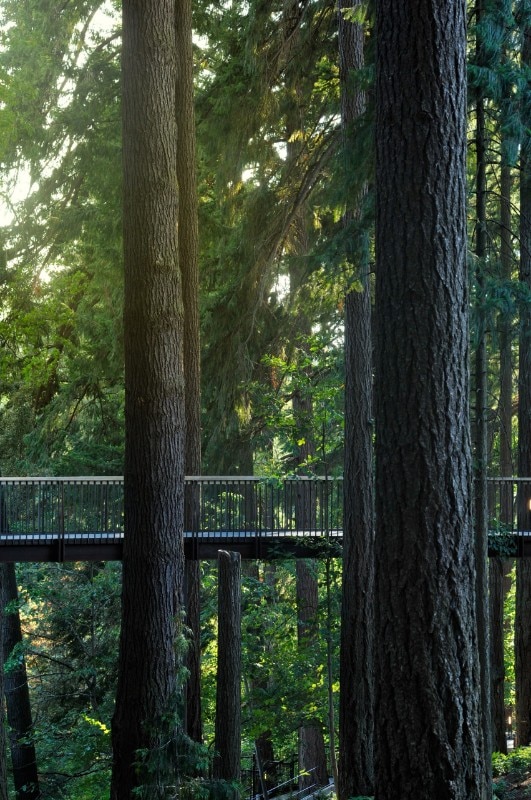In 2015, the firm Land Morphology began work on a 16-acre park in Portland, Oregon, undertaking the development of a new strategic master plan for the project. The botanical garden was established nearly a century ago by a local couple, John and Lilla Leach, who once lived on the property. Now, after years of work, the area finally opens to the public with an event pavilion, designed in collaboration with Olson Kundig Architects, and an aerial walkway through the trees.

Divided into phases, the plan called for transforming the park in a way that enhances the visitor experience while honoring the site’s history. The verdant site is crossed by a stream and features a diverse collection of native and non-native plants, including ferns, medicinal herbs, and flowering shrubs. The pavilion, called Fireside Terrace, is an open, covered structure with slatted wooden walls.
The site actually has a rich history: first used by natives as a place for hunting, fishing and camping, it became in the second half of the 19th century part of a sawmill that supplied lumber for the construction of houses in Portland. In 1931, John and Lilla Leach purchased part of the property and set out to create a private garden on it. They turned to Wilbert Davies, who later became a prominent landscape architect in California, to design the site. “Organized along cultural and ecological transects, the master plan preserves the legacy of the founders by carrying forward their commitment to environmental stewardship through new and expressive forms,” the project team explains.

















